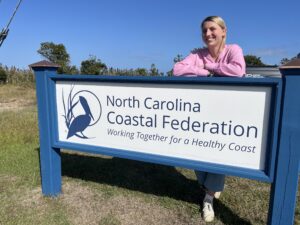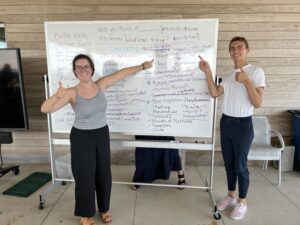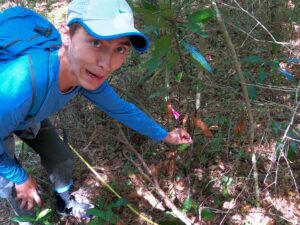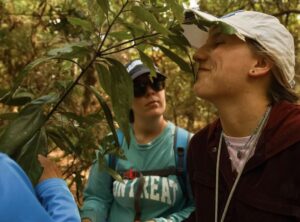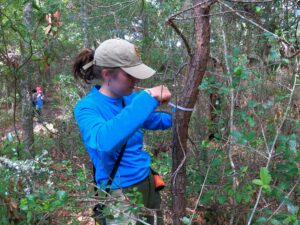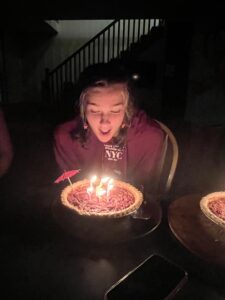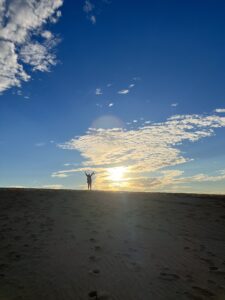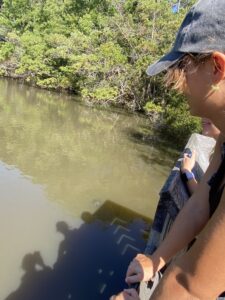Hi! My name is Quinn Brewer, and I am majoring in Environmental Studies on the Sustainability Track. I am graduating at the end of this semester and am grateful to have spent my last few months as an undergrad with the North Carolina Coastal Federation. When I had my first conversation with Lindsay and Linda about what I wanted my internship experience to be like, I was all over the map. I hoped for an internship with a mix of office work and fieldwork with the main focus on advocacy. I wanted to immerse myself in the environmental community here in the Outer Banks, and with the help of my mentor, Alyson Flynn, I was able to do just that.
At the beginning of my internship, I had the opportunity to shadow Alyson as she led a meeting with representatives from various government agencies and nonprofits discussing the houses in Rodanthe that are on the verge of collapsing. This was the first I was hearing about these houses and the challenges with managing an issue like this. Rodanthe experiences high rates of erosion, which means its shoreline is shrinking quickly, while the houses remain unmoved. Unfortunately, these houses are sitting on the ocean just waiting to be swept away by it. So far in 2022, three houses have fallen into the ocean leaving miles of debris scattered up and down the beaches. The first meeting I attended was bringing together stakeholders to visit the other 12 properties that are sitting on the sand, assess the problem, and begin discussing future action plans that need to be taken immediately. As the semester went on, I attended a follow-up meeting with some of the same and a few new people as they are continuing with this pressing work. Through these experiences, I was able to understand the different roles stakeholders have and how they collaborate to generate solutions to critical environmental problems.
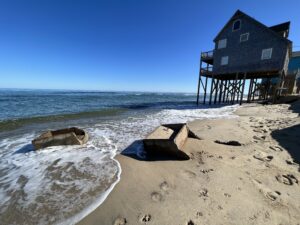
Through the Coastal Federation, I was also invited to attend other conferences and workshops to learn about problems arising from climate change. One of these events was the Climate Adaptation Workshop. This workshop brought together representatives from the National Park Service, Audubon Society, US Fish and Wildlife, and many other esteemed organizations to brainstorm actions to manage populations of certain endangered species that will be impacted by sea-level rise in the Outer Banks. I mostly spent days like these learning about the environmental challenges and how different agencies are addressing them.
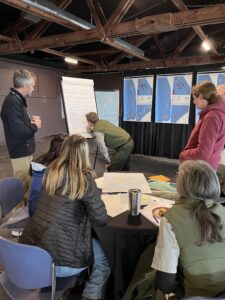
Some of my favorite days of my internship was conducting litter removal audits on the Coastal Federation’s adopted highway in Wanchese. I was able to collect data for Sarah Hallas, the Coastal Education Coordinator, about the amount and types of garbage found on the same portion of the road each month. The data I collected will be used to advocate for policies regarding waste on a local level.
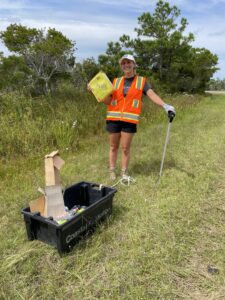
In between all of the meetings and conferences I attended, I completed a project about microplastics. In July 2021, the Coastal Fed hosted the North Carolina Coastal Microplastics Forum. This forum brought several speakers to discuss the latest research regarding microplastic pollution. They discussed their own research and areas where further research is needed to assess the risk of ingesting microplastics to humans and other species. This subject area is relatively new, so much is still unknown about it. My project for the Coastal Federation was to research new policies, technologies, and initiatives that have been completed since the forum and identify gaps in knowledge and research. The information I have collected will be used by the federation for future action that aligns with their goals of advocacy and education.
Overall, I loved my time interning with Alyson at the North Carolina Coastal Federation. The mix of advocacy work both in and out of the office and learning how organizations collaborate to find solutions for current environmental threats were incredibly valuable experiences for me as I move into the next chapter in my life. This internship inspired me to continue advocacy work for a nonprofit after I graduate. I am appreciative of all of the guidance and opportunities Alyson and the rest of the Coastal Federation staff gave to me this semester.
